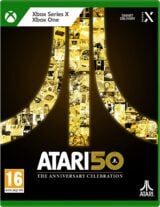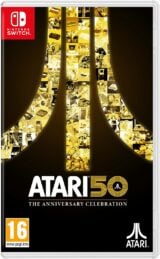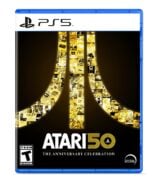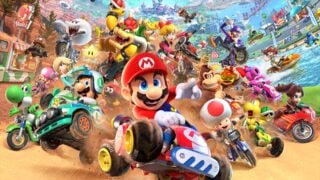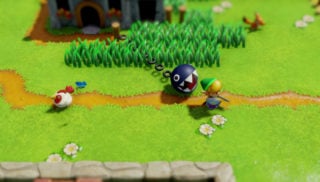Arcade Perfect: How Pac-Man was ported to consoles
An exclusive excerpt from new book Arcade Perfect
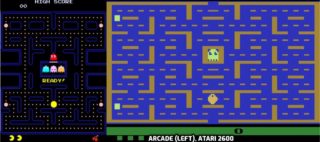
The following excerpt is syndicated from Arcade Perfect: How Pac-Man, Mortal Kombat, and Other Coin-Op Classics Invaded the Living Room by David L. Craddock, a new book which is available in paperback and Kindle formats. Find out more at arcadeperfectbook.com.
Tod Frye Stepped into his boss’s office and found another programmer, Bob Polero, already waiting. Frye sat down beside Polero and listened as his boss made a pitch.
“We have two coin-op conversions that need to get started,” he said.
Frye raised an eyebrow. Only two? It was April of 1981, and everyone at Atari was hustling. Two years earlier, several key employees had left and founded Activision. The concept of any studio other than Atari producing games for the Atari 2600 console was still hard to believe, but Activision’s growing team had already put out several hits such as Pitfall! by David Crane, a former colleague of Frye’s. Refusing to cede hot properties to the competition, Atari had been signing licenses to convert coin-op games to cartridges for the 2600.
Atari’s first big coin-op-to-console release had been Space Invaders. There were many more to come. Arcades had entered a period historians would refer to as a golden age: shoot-em-ups like Defender, Missile Command, Asteroids, and Galaxian; racing games like Rally-X and Pole Position; maze crawls like Pac-Man, Berzerk, and Wizard of Wor; platformers—run-and-jumpers—like Donkey Kong.

Any of the above would have been hot commodities. The two up for discussion during today’s meeting were Defender and Pac-Man.
“You’re available to do one, and so is another programmer,” the manager said to Frye. “You guys figure it out.”
Frye and Polero talked it over. “I don’t care,” Frye said, shrugging. But he did. He’d played Pac-Man and Defender, and vastly preferred the shooter. Defender had players defending humanoids on an alien planet from waves of enemy ships. Describing the game as difficult was like describing the Pacific as a small body of water.
Defender’s controls consisted of five buttons and a joystick. Enemy aircraft flew in patterns and bombarded players and the planet with unique attacks. Most players lasted mere seconds their first time out. Yet the game’s high degree of challenge drew them in rather than scared them off. It was excruciatingly, agonizingly tough, but never unfair. Players learned strategies and timing as they played, and beating the game became an honor worthy of bragging rights.
Pac-Man, to Frye, was nothing more than a yellow pizza with a missing slice running around a maze, munching dots and avoiding four colorful ghosts. Porting either game would be a headache. Defender’s graphics and multi-button controls would need to be severely truncated or compacted to work on the 2600; Pac-Man’s graphics were simpler, but more flamboyant, and the patterns of the ghosts would be important to incorporate so arcade players would be able to feel at home. But if Frye had his choice, he’d choose—
“I’ll take Defender,” Polero said.
Frye pasted on a smile. “Fine. No problem. I’ll do Pac-Man.”
Pac-Man had been made by Namco, a company that, much like Atari, had operated according to the one-programmer-job rule. Businessman Masaya Nakamura founded Nakamura Manufacturing to create coin-operated children’s rides for retail stores in Yokohama, Japan.
“Japanese players paid little attention to Pac-Man when it appeared in arcades in 1980, preferring to drop yen on action games like Space Invaders. America was a different story: In its first year, players spent over $1 billion in quarters on Pac-Man.”
When video games caught on, the company was renamed Nakamura Amusement Machine Manufacturing Company, or NAMMCo. One of its first hits was Namco F-1, a racing game released in 1976. When Atari’s Japan-based operation struggled, Nakamura swooped in and bought the company for $500,000, outbidding Sega’s offer of $80,000.
Under the agreement’s terms, NAMMCo exclusively licensed and distributed Atari coin-op games in Japan. Nakamura’s company, later renamed Namco, produced plenty of its own titles. Galaxian became the first arcade game to use multicolor sprites when it launched in 1979. That spring, inspiration struck engineer Toru Iwatani when he removed a single slice of pizza and observed that the remainder looked like a head with an open mouth. He refined the concept by rounding out the Kanji character for mouth (くち).
On the surface, Pac-Man was simple. Players guided the titular hero, shaped like a yellow hockey puck—or a pizza with a slice missing, or a rounded-off kanji character—around a maze full of dots. Four ghosts started in a square pen in the center; a few seconds after the game began, they freed themselves and gave chase. Players had to munch the breadcrumb trail of dot-shaped pellets along each corridor of the maze. Once they gobbled up the last pellet, the maze was repopulated, and a new session began. Players could either avoid ghosts as they roamed the corridors, or gobble up one of four power pills in the maze to devour the ghosts, which banished them back to their pen for a few precious seconds and increased players’ score.

Japanese players paid little attention to Pac-Man when it appeared in arcades in 1980, preferring to drop yen on action games like Space Invaders. America was a different story: In its first year, players spent over $1 billion in quarters on Pac-Man. Coin-op manufacturer Bally/Midway purchased the rights to distribute Pac-Man arcade cabinets in North America in 1980, but Atari—then owned by Warner Communications, Inc.—capitalized on its relationship with Nakamura in Japan and secured exclusive licensing rights to distribute cartridge versions of the game.
Atari’s marketing department pulled out all the stops to advertise the forthcoming VCS/2600 adaptation of Pac-Man, taking out ads in magazines, on televisions, even billboards. Tod Frye viewed the job as just that.
“Now admittedly, now we know that those were important days. But back then it was just another day on the job. I do not remember Pac-Man having any sort of pressure. I started on it, and I worked on it, and it did need to get done.”

Frye approached the project with pragmatism. Pac-Man’s arcade board sported a Zilog Z80 processor clocked at 3.072 megahertz, two kilobytes of video memory, another two kilobytes for standard system memory, video hardware able to display at 224×288 resolution, the ability to render sprites with video hardware, and a wavetable sound generator to play the game’s tunes.
Its data consumed sixteen kilobytes of storage. Up to eight sprites could be displayed on the screen at once—more than adequate for Pac-Man’s hero, four ghosts, a few pieces of fruit that gave players bonus points, and power pellets—in up to sixteen simultaneous colors.
Atari’s console plodded along at 1.19 megahertz, made do with 128 bytes of system memory—less than thirty-one times the amount on the arcade game’s board—and programmers had to squeeze data onto four-kilobyte ROM chips.
“The amount of computing power in a Namco coin-op board for Pac-Man was orders of magnitude more than the computing power of the Atari 2600,” Frye said.
There were other quirks unique to Pac-Man. For instance, the game’s mazes were taller than they were wide, a feat Iwatani accomplished by installing a vertically mounted, nineteen-inch monitor. Television sets were more horizontal than vertical. There was no way Frye could recreate Pac-Man’s mazes one-to-one. So, he didn’t.

“That’s all context for: I abstracted Pac-Man,” Frye explained. “I abstracted the heck out of it. I did not even try to make the game like the coin-op. I looked at Pac-Man and said, ‘What do I think the essence of this is, and how can I make something that evokes its spiritual essence, the essential character of Pac-Man? How can I make something on the Atari 2600 that, even if it doesn’t look the same, captures the essential character of this game as I understand it?’ And in truth, I feel very good about how I did that.”
Every game, Frye knew, consisted of two components: appearance, and functionality. To abstract Pac-Man from a coin-operated game into a cartridge, he evaluated both at the same time.
A maze. Dots. Ghosts. A chipped hockey puck. Those covered the game’s appearance. Functionality would be trickier.
The maze would have to look the same, and the dots had to disappear when players cruised over them, a visual representation of the puck-shaped character eating each one.
“You’re thinking about that as you go: drawing horizontal and vertical walls, some gaps, rows of dots, dots that can disappear, and drawing four ghosts and a Pac-Man. For me, all these years later, that’s still the essence of it. It was an interesting juggling act.”
“Atari had a company-wide policy that only space games could use black backgrounds. The reason was that phosphor would cause a burn-in effect when colorful images were set against a black background for too long”
In the arcade version, the walls of Pac-Man’s maze were constructed from blue lines set against a black background. According to Frye, Atari had a company-wide policy that only space games could use black backgrounds. The reason was that televisions in both black-and-white and color flavors were made with phosphor on the screens, and that phosphor would cause a burn-in effect when colorful images were set against a black background for too long. Space games were an exception, per Atari management, because no other color could accurately represent the deep darkness of space besides black.
“That’s why a lot of 2600 games have what’s called an attract mode, where when you’re not playing, it draws some pictures but swaps colors around a lot,” Frye explained.
(Other ex-Atari personnel recalled this policy differently, or not at all. Al Alcorn remembered no such mandate before his departure in 1981. Rob Fulop, who converted Missile Command for the 2600, shared one reason why black screens would have been used for space shooters, as well as preferable to any other color all around.
“There was a hardware register called HMOVE that was hit whenever an object was being reused, and a consequence of hitting HMOVE was an annoying black line appearing on the left side of the display extending about one inch long. A black background covered this annoying HMOVE artifact, thus black backgrounds were preferred. I don’t recall any rule about dictating the color of the background, but I left after finishing Missile Command.”)

Frye changed up the color scheme to orange lines set against a blue backdrop. To him, that just made sense. A blue-and-black color scheme never struck him as integral to the game’s character. As long as there was a maze full of dots and ghosts, why make a fuss?
“I am here to tell you, almost forty years later, that it would have cost me nothing to make that change, and I pretty much wish I had,” Frye admitted with a laugh. “If I could go back, I’d say, ‘You know what? It doesn’t look like Pac-Man unless I have a black background and a blue maze. Can I get a variant on that guideline?’ If I knew then what I knew now, I’d say, ‘It’s hard enough to make this look like Pac-Man. I need you to cut me some slack by letting me use blue on black.’”
Dots posed another problem. Atari 2600 pushed graphics to TV screens using a proprietary TIA, or Television Interface Adapter. All audio/video capabilities stemmed from the TIA. That didn’t leave Frye with much wiggle room to create on-screen graphics as deceptively simple as circular dots.
“You have no idea how crazy this shit is,” he said.
The TIA had the capacity to draw a playfield, defined as the area on the screen where graphics appeared. Twenty bits of playfield data could be stored on one side; another twenty bits could be repeated or reversed (mirrored) on the other side. That meant Frye could draw half of a Pac-Man maze and have the TIA mirror it to create the opposite side, but there wouldn’t be enough capacity to render all the individual dots.
However, there was a loophole. The TIA had just enough graphical data for him to draw little dashes instead of dots. Those dashes would be treated by the TIA as part of the playfield, but Frye could make them disappear—flipping a dash’s bit in memory from on to off—when Pac-Man traveled over them.
“By the time the world came down with a case of “Pac-Man fever” in 1980, the 2600 was already three years old. Smoothing out the corners of Pac-Man’s mazes would take computing power the 2600 did not have, so Frye made them sharp instead.”
“That’s what I decided to use for the dots,” he said. “It was really insanely hard, and was not sensible at the time, to try and make the round dots. The dashes was a practical accommodation to the hardware limitations of the 2600.”
Each maze was supposed to have smooth, rounded corners. That was a cinch for manufacturers like Namco, who were developing boards that cost hundreds of dollars. When arcade game makers discovered new technology, they could add to an existing board or make a new one from scratch. Consoles like the 2600 were set in stone. One option for improving games was to add chips to cartridges that expanded their functionality, but at a hefty cost to Atari. Frye was stuck with the original hardware.
By the time the world came down with a case of “Pac-Man fever” in 1980, the 2600 was already three years old. Smoothing out the corners of Pac-Man’s mazes would take computing power the 2600 did not have, so Frye made them sharp instead.
“All of that stuff, such as finer details on the maze, round dots, nicer-looking fruit—all a question of computing power,” he said. “The Atari 2600 simply did not have the ability to draw the same things that Namco’s Pac-Man hardware did. Wasn’t even conceivable.”
Every maze had a tunnel. One entrance was on the left side, the other on the right. Going into one passage led players and ghosts out of the other. Frye found it impossible to simply recreate Pac-Man’s horizontal tunnel on the 2600.
“In theory, I could have made a really narrow maze and left most of your television screen blank.” He paused. “I’m not even going to think about that right now.”

Frye’s Pac-Man conversion included a module that drew rows in pairs. Within that code, it was easier to draw the tunnels on the top and bottom of the maze, with extra code to generate the pen in the center where ghosts begin each game. “My sense, rightly or wrongly, was that the essential character of Pac-Man was that you had a tunnel. I did not have the sense that Pac-Man require a horizontal tunnel instead of a vertical tunnel. And you have to remember, the cartridge was almost impossible to write. It was a little easier to make the tunnels at the top and bottom, so I did that.”
To Frye’s thinking, the ghosts’ movement patterns were as integral to Pac-Man’s functionality as the maze, dots, and ghosts were to its aesthetic. He knew that players who performed the same movements each time they played the game could trick the ghosts into steering clear of the Pac-Man character. That gave players free reign to snack on dots (dashes) at their leisure. Without the arcade game’s source code, Frye had to write his own movement routines. He relished the challenge, and designed a pseudo-random number generator that produced a fixed sequence of numbers. Every frame—sixty every second—he would advance the pattern.
“What that does is keep the number appearing to be random relative to the timeline of the player. Since the game is moving along at sixty frames per second, the player’s moves are very rarely always at the exact sixtieth of a second,” Frye explained.
Normally, a random number generator produced a seed that altered routines every time the game ran. To ensure that the ghosts could be manipulated, they had to follow the same routine every time. Frye wrote his generator so it always spit out the same seed, resulting in the sequence players expected, but only at the start of the game.
“Frye had only four kilobytes of space on the game’s ROM chip to work with. A two-player mode seemed so important that skipping it in and implementing other features—or refining rough edges such as turning dashes to dots or smoothing out maze corners—never crossed his mind.”
“I used a fixed generator that would only check what players were doing infrequently, and had ghosts choose patterns based on that,” he said. “It used players’ moves to affect the pattern: Depending on what the player did, you would get one of several patterns. It felt like the ghosts were doing something different every time, but they would actually do the same thing. That made it feel like the ghost were smart. I captured the essence of that idea in a much simpler way. That is an essential characteristic of Pac-Man, and I did that. I’m very proud.”
There was one other characteristic of the arcade game Frye considered integral to its functionality. In arcades, two players could switch on and off each time one player lost a life.
“I had no idea—and I had no marketing information to back this up; no one knew anything—how many times the coin-op game was played by one player or two players. It may be that no one played two-player. The odds seem to be against that, but I felt it was important that you have a product in your living room where you can play back and forth with each other the way you could in the arcade.”
Frye had only four kilobytes of space on the game’s ROM chip to work with. A two-player mode seemed so important that skipping it in and implementing other features—or refining rough edges such as turning dashes to dots or smoothing out maze corners—never crossed his mind. The final product would be a little less fancy due to the space a two-player option would take up, but kids with a case of Pac-Man fever would be spared fights breaking out over who got the controller next.
“I didn’t feel like I was in trouble,” he said. “If I’d felt that way, I’d have considered putting two-player on the chopping block. I didn’t. I was feeling good.”
